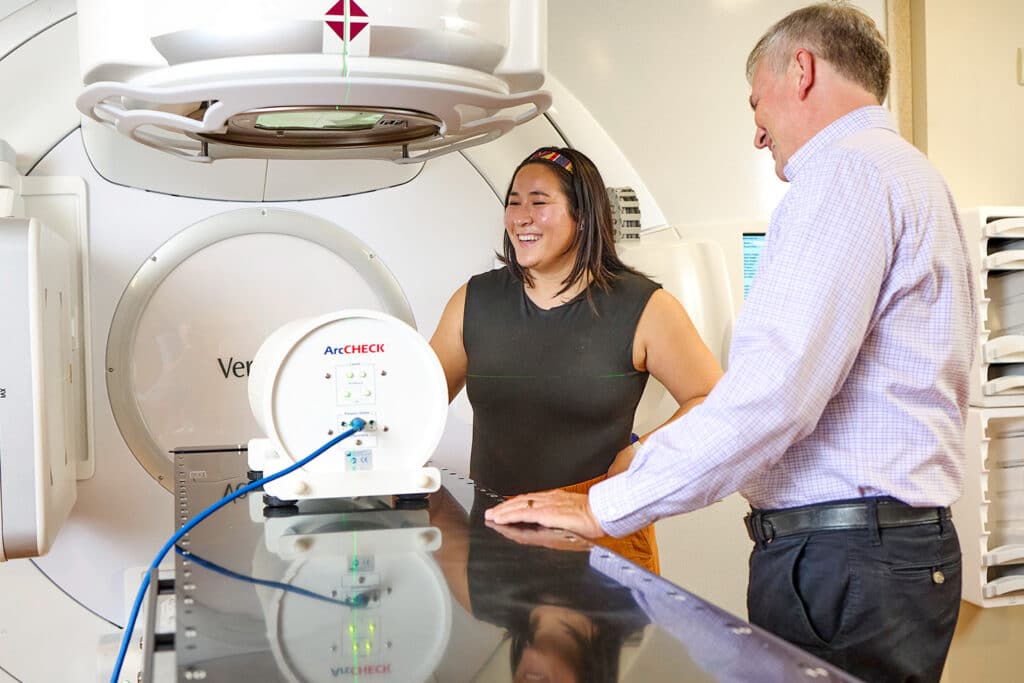
Medical Physics, MS
Without medical physics, the pivotal role in using radiation to treat cancer wouldn’t have been uncovered. By using physics as a foundation of knowledge, professionals in this field focus the application to medicine, examining, diagnosing, and treating patients. As a medical physicist, you can change the trajectory of someone’s life.
Program overview
Through our program, graduate students will acquire the basic and applied scientific knowledge needed for further education and research, and entry into a medical physics residency. Students that participate in our program will be armed with understanding patient safety, how research and inquiry lead to creation of new knowledge, and interpersonal skills necessary to function in a multidisciplinary environment.
Why Study Medical Physics at UT?
Since medical physics is a discipline where physics, nuclear technology, and medicine intersect, you can take your love of science and desire to help people and apply it to a fulfilling career. Since the university partners with UT Medical Center, you have a direct line from education to profession with our extensive network.
What do medical physicists do?
Medical physicists work in radiotherapy, nuclear technology, or medical imaging. They may help examine patients, read imaging results, create patient health plans, and research new processes or technologies.
What can you do with a MS in Medical Physics after graduation?
Once you’ve gotten your Master’s in medical physics, you could work with cancer patients, ensure equipment is safe and effective, or study how radiation affects the human body. You may work in an oncology department, at a hospital, or in a research lab.
Featured Courses
Below are some of the courses that students in our program can choose to take. For a list of courses, visit the graduate catalog.
NE 490 Radiation Biology
Interactions of ionizing radiation with living cells and its effects on human health.
NE 551 Radiation Protection
In this class, fundamental concepts and definitions used in radiation protection are covered, and an introduction to current radiation protection standards and regulations is provided.
NE 567 Medical Physics I
Ionizing radiation use in radiation therapy to cause controlled biological effects in cancer patients. Physics of interaction of various radiation modalities with body equivalent materials and physical aspects of clinical applications.
BME 574 Medical Imaging
Introduction is provided of the basic principles of image acquisition, formation, and processing, along with clinical applications of different imaging modalities for predicting disease outcome and treatment evaluation. Clinical site visits provide experience with imaging modalities covered in class.
Related Programs
Wondering what some other graduate program options are? Check out these related programs:
Admissions and Aid
Choosing the right university to pursue an engineering degree is an important decision—and a significant investment. We want to make sure that you have the information you need to both apply and make attending UT affordable.


Ready to Join Us?
See yourself on Rocky Top? We’ve made it easier than ever to apply for admission. Learn more about our admission requirements and the steps to apply to be an Engineering Vol.
